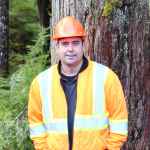The Haida Nation is supporting the socioeconomic well-being of its citizens and protecting important ecosystems on Haida Gwaii through their nation-owned forestry company.
Taan Forest: Protecting Haida Values through Sustainable Forestry
Estimated Reading time

20 Mins
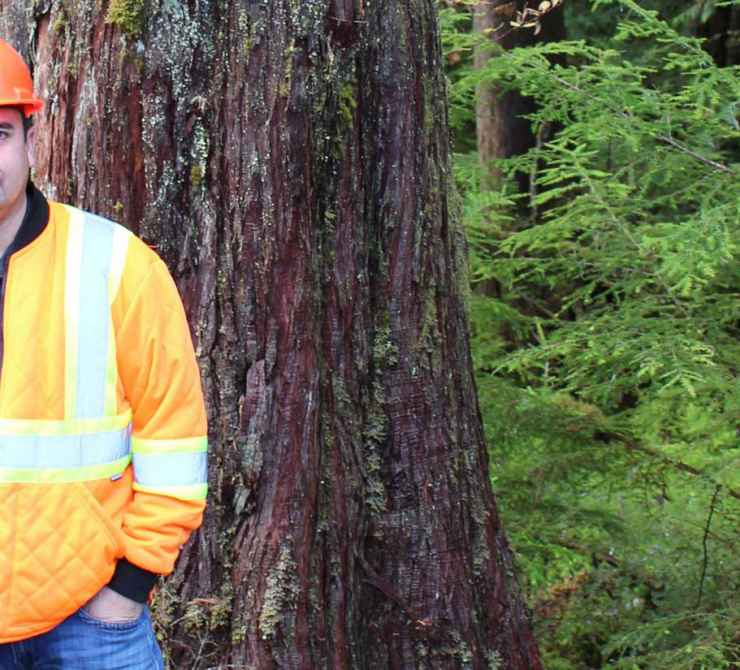
Taan Forest Ltd.
Taan Forest is based out of Skidegate, where the company supports employment opportunities and spin-off businesses on Haida Gwaii.
Members of the Haida Nation have carefully managed the forest resources of the Haida Gwaii archipelago for thousands of years. They selectively harvested trees to maintain their culture and their communities’ way of life in trade with other nations.
Beginning in the 1920s, newcomers brought large-scale logging to Haida Gwaii that disrupted this way of life. This industrial activity used harmful practices and brought little economic benefit to the Haida people.
The Haida have worked to regain decision-making authority over their land, and in 2009 bought a large forest tenure, enabling the Nation to control the majority of logging activity on the islands. Taan Forest was created as a Haida-owned forestry company which provides economic opportunities while protecting the Nation’s environmental and cultural assets.
Changing the Logging Landscape

Since the arrival of commercial logging on Haida Gwaii, the industry has been in conflict with the values of the Haida Nation.
“The Haida are brought up understanding the principle of Yuh’guudang, which means to treat everything with respect. It’s this cultural understanding that makes us Haida,” explains Peter Lantin, President of the Haida Nation. The Haida say protection of the land and its ecosystems as fundamental to the overall health of their territory.
The Haida are brought up understanding the principle of Yuh’guudang, which means to treat everything with respect. It’s this cultural understanding that makes us Haida.
In contrast to this, “the logging standards of the 70’s and 80’s were to clear-cut,” says Lantin. “There weren’t any ecosystem-based practices that had to be followed. There was a mentality and provincially backed policy to just take every tree possible.”
Furthermore, the timber was being shipped off-Island — along with the profits — meaning the Nation’s citizens did not receive any benefits from the resources extracted from their territory.
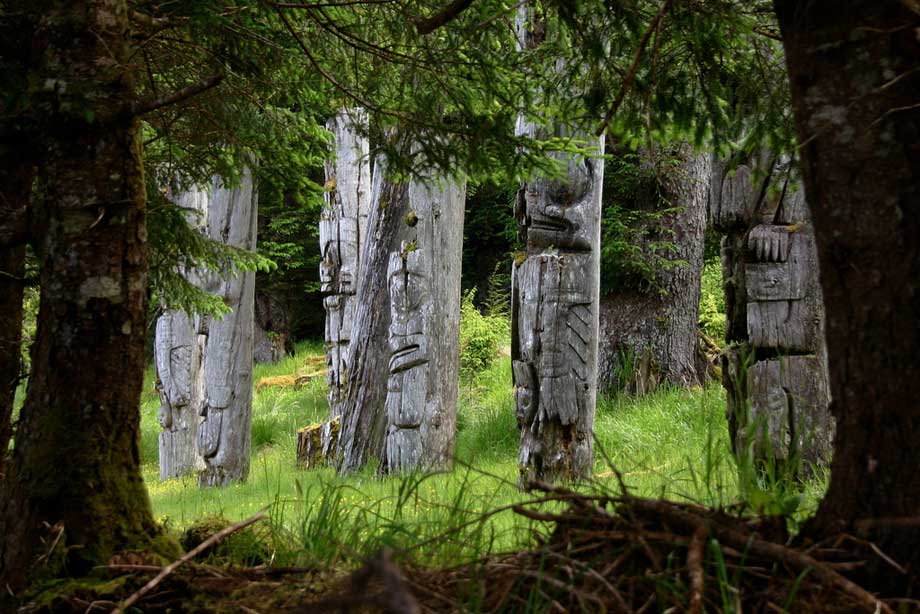
The harmful activity was a source of escalating conflict between the Haida, logging companies, and government, until it eventually coming to a head during the stand at Lyell Island in 1985. This stand was the tipping point for reform which eventually led to the landmark Kunst’aa guu – Kunst’aayah Reconciliation Protocol agreement, establishing the co-management of the Islands by the Haida Nation and Province of BC.
The Haida Nation used this turning point as an opportunity to benefit the ecosystems of Haida Gwaii and its residents. In 2009, the Haida invested in the purchase of the largest forest tenure on Haida Gwaii and established their own Nation-owned and operated logging company, Taan Forest.
Taking Sustainability from Policy to Operations

“Taan started from a negotiation that happened between the Province and the Haida Nation,” explains Bob Brash, CEO of the Haida Enterprise Corporation (HaiCo), the parent company of Taan. “There was a particular forest tenure that everybody was targeting, and it was the one that was eventually bought by the Haida.”
This strategic purchase gave the Haida Nation a controlling interest in the available timber supply area on Haida Gwaii. By 2011, Taan and the Haida Nation owned two tenures with a potential harvest level of 460,000 cubic metres — making it an important player in the coastal forest industry.
“All of the sudden, Taan was the biggest of the smaller licensees on the Coast,” says Brash. “Taan is a fairly significant forestry company, and it’s growing.”
By owning and operating a forestry company, the Haida Nation can ensure its environmental mandate for Haida Gwaii is enforced through Taan’s on-the-ground operations.
“In terms of forest management practices, we operate under the toughest environmental mandate on the Coast,” explains Brash. This mandate includes maintaining Forest Stewardship Council (FSC) certification, considered the strictest environmental and social standards in the world for measuring responsible forest management.
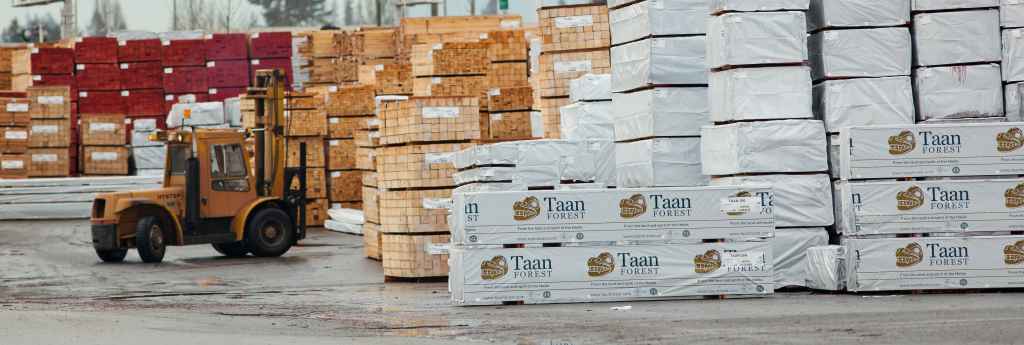
Taan goes even further than FSC standards in ensuring its operations are sustainable. The company is guided by the Haida Gwaii Land Use Objectives Order, which contains objectives to protect important Haida cultural values and ecosystem integrity through forestry operations. The objectives adhere to ecosystem-based management and include protection of endangered wildlife habitat, aquatic habitat, culture features, and areas that support biodiversity.
“Sustainability is at the heart of Taan’s operations,” says Brash. “Maintaining FSC certification and adhering to the Land Use Order is a requirement in everything we do. We work closely with the Haida Nation to protect environmental and cultural values, and to support community well-being, such as providing for the Nation’s cultural cedar needs.”
Sustainability is at the heart of Taan’s operations. We work closely with the Haida Nation to protect environmental and cultural values, and to support community well-being, such as providing for the Nation’s cultural cedar needs.
To do this, Taan’s foresters work with the Council of the Haida Nation’s Heritage and Natural Resource Department staff who develop the standards for identification and protection of important features. Taan’s staff are trained to assess each area prior to logging and identify any environmental or cultural features, such as monumental cedar trees or endangered species habitat, and submit that information to the Nation for approval before proceeding. If a feature is discovered, such a Marbled Murrelet nest, a reserve zone is designated around the habitat to protect it.
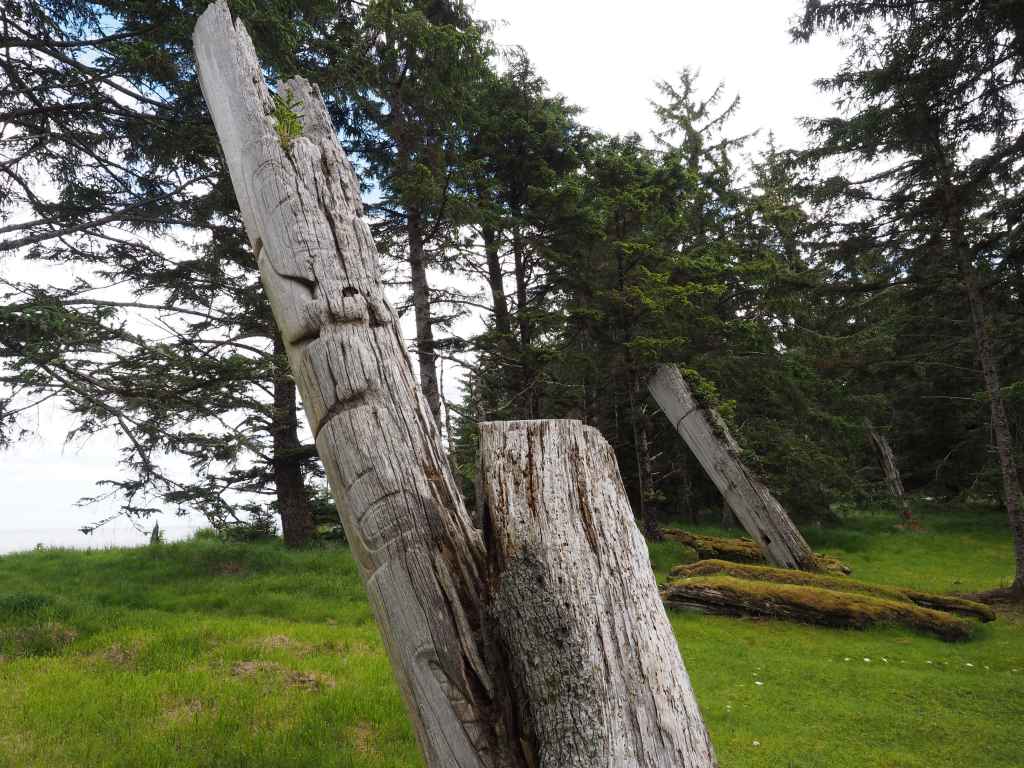
“All of our foresters are trained in Cultural Features Identification, and taught how to recognize all the features identified in the Land Use Order,” says Richard Jones, Manager of Taan Forest. “It’s not just a matter of laying out cut blocks anymore. The identification is quite an intense part of our training program, and our foresters go out on foot and thoroughly check each setting for features to make sure each block is laid out within the guidelines.”
This process requires extra work, but the effort is worth it. “We’ve maintained FSC certification for four years now,” says Brash. “We are doing things differently out there than previous operators, and we are proud of that.”
We’ve maintained FSC certification for four years now. We are doing things differently out there than previous operators, and we are proud of that.
Bringing the Benefits Back to the Community
Taan Forest also supports the socioeconomic aims of the Reconciliation Protocol Agreement to ensure that Haida citizens and local communities on Haida Gwaii benefit from commercial activity on the island.
“A huge concern for Taan is how we help in the social well-being of the island. Job creation and job security are priorities, as well as creating as many local jobs as possible,” says Brash.
In the past, logging companies would hire contractors from outside of Haida Gwaii to fill positions. When a job was completed, these contractors would then leave the Islands and take the revenue with them.
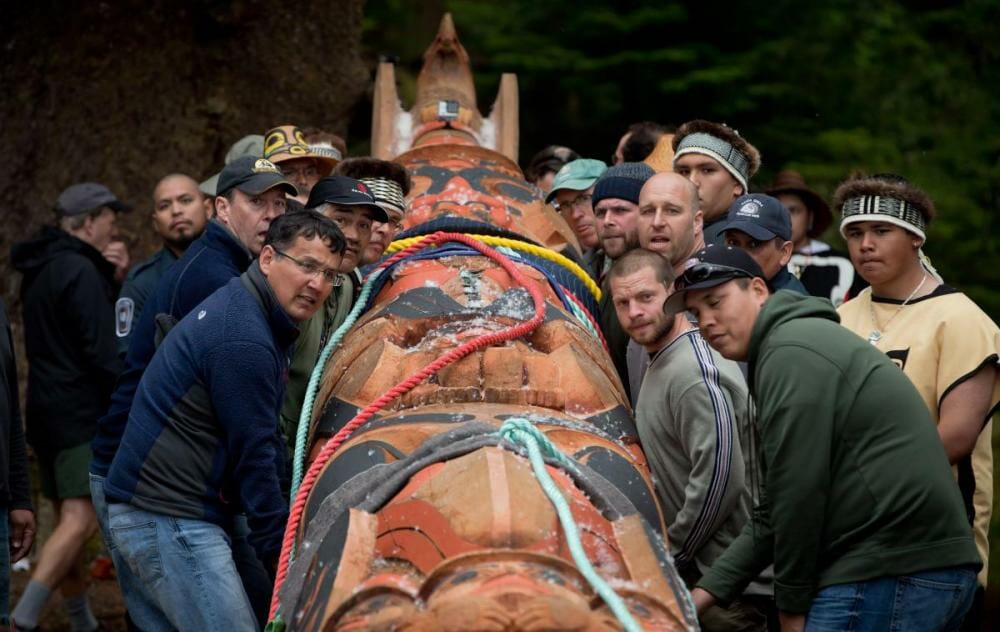
“We hire contractors that support employing locals,” says Jones. “When the employment stays here, the benefit stays here, and through the training provided we are building a local pool of contractors and workers who all have the appropriate training.”
About half Taan’s staff are Haida, which Taan actively recruits and trains. This is part of Taan’s ‘island-driven’ model to hiring. “Haida Gwaii is such a close-knit community, that our focus is really on training locals — both Haida members and non-Haida members,” says Jones. “When we keep employment local, everybody here benefits.”
Haida Gwaii is such a close-knit community, that our focus is really on training locals — both Haida members and non-Haida members. When we keep employment local, everybody here benefits.
This socioeconomic mandate also means that the company heavily invests in its employees. “We look at things with a different lens than other forestry companies,” explains Brash. “When the market conditions go down, other operators will curtail their operations a bit and lay off staff.”
Taan takes a different approach. “We do that far less eagerly. We try to keep staff employed and buffer them from market changes,” says Brash. “Even if the market is down for a bit, we will keep operations going so our staff can support their families.” This stability helps the whole community. “We definitely impact the stability of Haida Gwaii’s economy — we’re a steadying influence.”
The nation-owned enterprise also ensures that Taan’s profits are invested back into the Islands to support other industries. Taan works with local businesses to create spin-off opportunities, such as investing in a joint venture with the Skidegate Band Council to create a new pole-making business. “We will always look for spin-off opportunities and new ways to support additional job creation,” confirms Brash.
Key Challenges and Successes
Growing Strategically to Compete in the Market
Haida Gwaii’s remote location provides some unique challenges for Taan’s growth. “The profit margins in such a remote location are tough,” explains Brash. “The intense sustainability guidelines add to overhead. Combined with Haida Gwaii’s relative isolation, we have to think carefully about how to move forward.”
To meet this challenge, Taan focuses on specialty products to realize the value of its unique brand and high-end wood materials. “We are always thinking about how to meet the challenges that Taan faces,” says Jones. “The answers are to find value-added ventures, such as doing high-end custom cuts for instruments, and to forge strategic partnerships, such as our joint venture with the Skidegate Band Council to create a telephone-pole making plant.”
Targeting the right market and exploring new products is an approach that Taan will continue to use going forward. “We are not going to compete with the mass-production of two-by-fours,” says Jones. “We have a different approach, to find specialized markets and offer unique products, and that’s how we are growing.”
Building the Local Workforce
“Another challenge for us is to find local workers with the appropriate skill sets for some jobs,” says Brash. For a solution, Taan works closely with the CHN to provide training locally. “We work with the Council of the Haida Nation to come up with skills and training courses to prepare people for work in this industry.”
Once employed, the nation works to develop its employees through various training programs. “Just recently we had a manager’s supervising skills course offered to various staff of the Haida Enterprise Corporation,” says Brash. “Once people are in our company, we try to improve their skills. We invest in them so that they can grow with us.”
Richard Jones, who is Haida, is an example of this growth. Now the manager of Taan, Jones started off as a contract supervisor and was mentored into increasingly higher management positions. It’s an approach to capacity-building that continues today. “Mentoring youth to be in the sector is something we strongly support,” says Jones. “We want to make sure to provide training opportunities for our employees, and it’s really great to see their development.”
Economic Outcomes
With their investment in the start-up of Taan Forest, Haida Nation secured controlling interest of forestry tenures for 60% of the forestry operations on Haida Gwaii. The Nation is able to manage logging activities using more sustainable logging practices, and generate wealth and employment opportunities for Haida members and local workers.
This project has resulted in the creation of a Nation-owned forestry business, with additional revenues created through the asset purchase of a large, viable forestry tenure. A forestry license to cut for 120,000 cubic meters was purchased to be rolled out into First Nations Woodlands License.
Taan has also created value-added spin-off opportunities, such as log home building, a joint venture with Skidegate Band Council to create a pole-making plant, and more.
Learn more about diversification.
Environmental Outcomes
Through Taan, the Haida ensure that world-recognized sustainable forestry management is at the core of forestry operations. Taan Forest has obtained Forest Stewardship Council Certification, considered the most stringent forestry management practices in the world, and Rainforest Alliance Certification. The business is further accountable to the conservation standards of the Haida Nation’s Land Use Order.
Abiding by the Land Use Order ensures that sensitive habitats are protected, including bear dens, Northern Goshawk, Marbled Murrelet, Great Blue Heron and Norther Saw-whet Owl nesting habitats. Sensitive ecosystems, such as watersheds, swamps, streams, fish habitat, and areas critical to support biodiversity are also protected.
Taan has also logged well under is allowable cut since inception of the business. “Because of the environmental standard we now have on Haida Gwaii, and annual allowable cut went down by over half,” says Brash. This means that the extraction of timber on Haida Gwaii is being carefully managed with sustainability.
Learn more about regulation.
Social Outcomes
The start-up of and continued operation of Taan has created 20 full time positions, half of which are held by First Nations members, in the local community. The majority of employees are Haida Gwaii residents, causing the profits to be cycled back on the island. This employment provides important family-supporting wages in a remote, forestry-dependent region of British Columbia. Taan Forest works to keep its staff employed through fluctuations in the market to provide stability to the region’s economy: “We try to keep our operations going continuously, because we know these positions support local families,” explains Brash.
Taan also invests in the training and capacity building of local workers. All of its foresters receive Cultural Feature Identification training, and other specialized training to support their growth in the business. “We recently had three young people go through a junior engineer program, and they were hired and trained so they could become engineers with us,” says Jones.
Learn more about income levels.
Cultural Outcomes
Taan works closely with the Mapping Department and Heritage Department of the Haida Nation to ensure that all cultural features that are discovered are recorded, mapped, and protected. All of Taan’s foresters take Culture Feature Identification Training in order to be able to identify important cultural features, such as Culturally Modified Trees, monumental cedars, and archeological sites. “All of them have to take this training in order to be able to ensure the objectives of the Land Use Order are met,” says Jones. “It quite an intense part of our training program.”
Taan means “bear” in the Haida language and all lumber produced from Taan Forest products proudly displays a Haida black bear logo design along with FSC and Rainforest certification branding. This expression of Haida language and art in the international market also creates pride in the Haida culture.
Learn more about cultural sites.
Contacts
Between 2009 – 2013, Coast Economic Development Society approved $2,025,000 towards the creation of Taan Forest LP and HaiCo Operations.
Online Resources
- Why Does Taan Export Logs?
Haida Enterprise Corporation - FSC Management Plan.
Taan Forests, August 2011. - Forest Stewardship Council—Our History.
Forest Stewardship Council. - Haida First Nation.
Aboriginal Business and Investment Council. - Haida Gwaii Land Use Order Objectives.
Ministry of Forests, Lands and Natural Resource Operations – Province of British Columbia. - Taan Forest: From the Land and Spirit of the Haida.
Cando. - Haida Logging Faces Challenge of Balancing Profits with Sustainability.
The Vancouver Sun, December 1, 2015. - Taan Forest Rising as the New Face of Logging Industry on Haida Gwaii.
The Vancouver Sun, February 17, 2012. - Haida Gwaii Land use Orders.
Haida Gwaii Management Council. - Postcard from Haida Gwaii: Where Sustainability Dates Back 13,000 Years.
Alternet, August 17, 2015.
Published On May 4, 2016 | Edited On January 23, 2023

